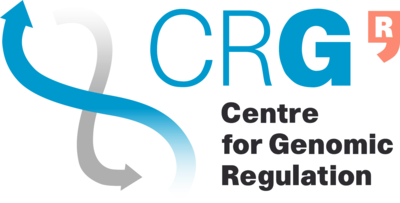Publication:20200609104227
From Bioinformatics Core Wiki
| Publication | |
|---|---|
| URL | https://www.frontiersin.org/articles/10.3389/fgene.2020.00211/full |
| Title | MasterOfPores: A Workflow for the Analysis of Oxford Nanopore Direct RNA Sequencing Datasets
|
| Authors | Luca Cozzuto, Huanle Liu, Leszek P. Pryszcz, Toni Hermoso Pulido, Anna Delgado-Tejedor, Julia Ponomarenko, Eva Maria Novoa |
| Date | 2020-03-17
|
| Publisher | Frontiers in Genetics |
| DOI | 10.3389/fgene.2020.00211 |
| Tag | Nextflow, direct RNA sequencing, nanopore, Docker, singularity |
Abstract:
The direct RNA sequencing platform offered by Oxford Nanopore Technologies allows for direct measurement of RNA molecules without the need of conversion to complementary DNA, fragmentation or amplification. As such, it is virtually capable of detecting any given RNA modification present in the molecule that is being sequenced, as well as provide polyA tail length estimations at the level of individual RNA molecules. Although this technology has been publicly available since 2017, the complexity of the raw Nanopore data, together with the lack of systematic and reproducible pipelines, have greatly hindered the access of this technology to the general user. Here we address this problem by providing a fully benchmarked workflow for the analysis of direct RNA sequencing reads, termed MasterOfPores. The pipeline starts with a pre-processing module, which converts raw current intensities into multiple types of processed data including FASTQ and BAM, providing metrics of the quality of the run, quality-filtering, demultiplexing, base-calling and mapping. In a second step, the pipeline performs downstream analyses of the mapped reads, including prediction of RNA modifications and estimation of polyA tail lengths. Four direct RNA MinION sequencing runs can be fully processed and analyzed in 10 h on 100 CPUs. The pipeline can also be executed in GPU locally or in the cloud, decreasing the run time fourfold. The software is written using the NextFlow framework for parallelization and portability, and relies on Linux containers such as Docker and Singularity for achieving better reproducibility. The MasterOfPores workflow can be executed on any Unix-compatible OS on a computer, cluster or cloud without the need of installing any additional software or dependencies, and is freely available in Github (https://github.com/biocorecrg/master_of_pores). This workflow simplifies direct RNA sequencing data analyses, facilitating the study of the (epi)transcriptome at single molecule resolution.
The direct RNA sequencing platform offered by Oxford Nanopore Technologies allows for direct measurement of RNA molecules without the need of conversion to complementary DNA, fragmentation or amplification. As such, it is virtually capable of detecting any given RNA modification present in the molecule that is being sequenced, as well as provide polyA tail length estimations at the level of individual RNA molecules. Although this technology has been publicly available since 2017, the complexity of the raw Nanopore data, together with the lack of systematic and reproducible pipelines, have greatly hindered the access of this technology to the general user. Here we address this problem by providing a fully benchmarked workflow for the analysis of direct RNA sequencing reads, termed MasterOfPores. The pipeline starts with a pre-processing module, which converts raw current intensities into multiple types of processed data including FASTQ and BAM, providing metrics of the quality of the run, quality-filtering, demultiplexing, base-calling and mapping. In a second step, the pipeline performs downstream analyses of the mapped reads, including prediction of RNA modifications and estimation of polyA tail lengths. Four direct RNA MinION sequencing runs can be fully processed and analyzed in 10 h on 100 CPUs. The pipeline can also be executed in GPU locally or in the cloud, decreasing the run time fourfold. The software is written using the NextFlow framework for parallelization and portability, and relies on Linux containers such as Docker and Singularity for achieving better reproducibility. The MasterOfPores workflow can be executed on any Unix-compatible OS on a computer, cluster or cloud without the need of installing any additional software or dependencies, and is freely available in Github (https://github.com/biocorecrg/master_of_pores). This workflow simplifies direct RNA sequencing data analyses, facilitating the study of the (epi)transcriptome at single molecule resolution.
| Annotation | This paper describes MasterOfPores, the NextFlow pipeline for the processing and analysis of direct RNA Nanopore sequencing data. |
|---|
